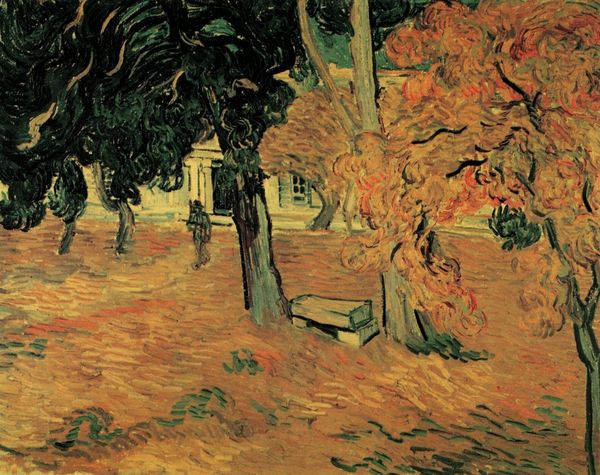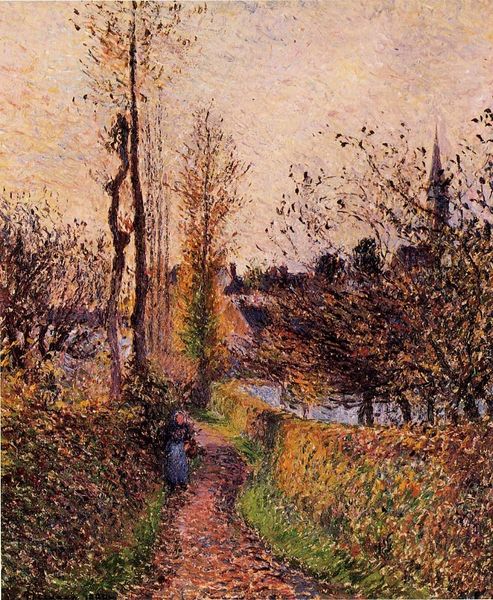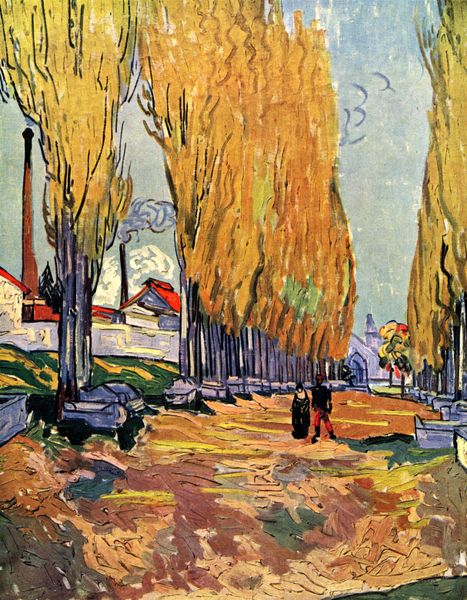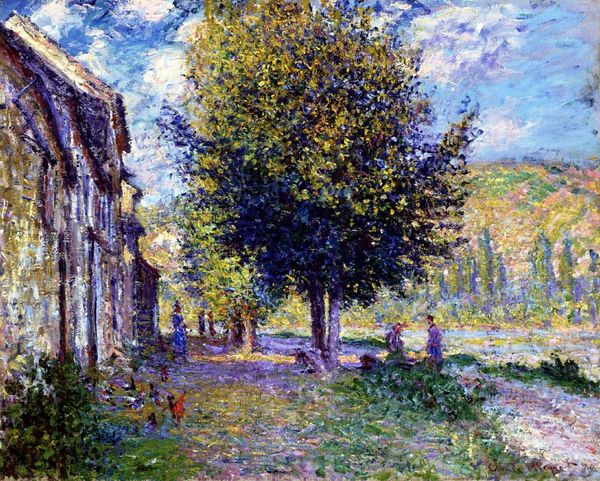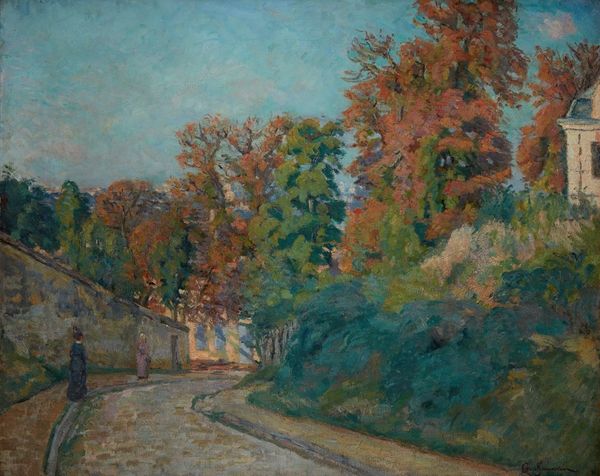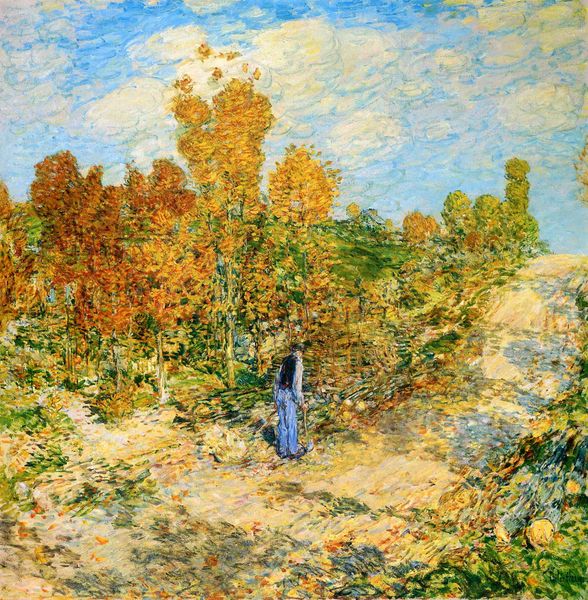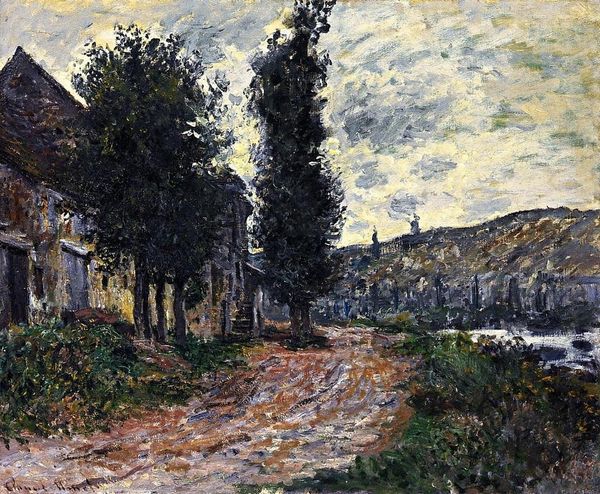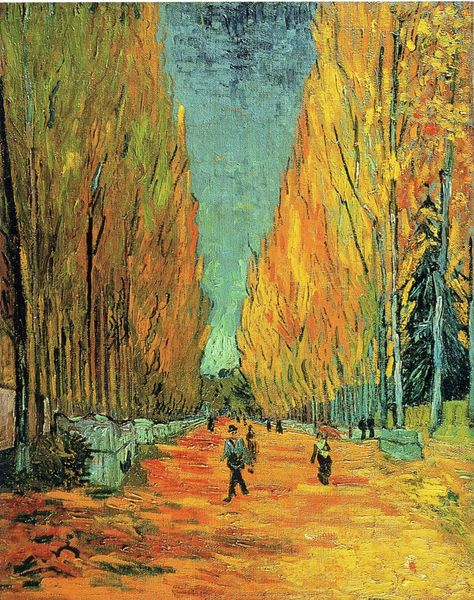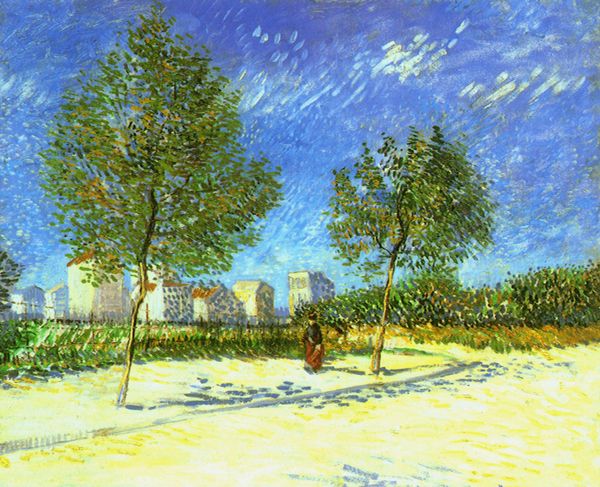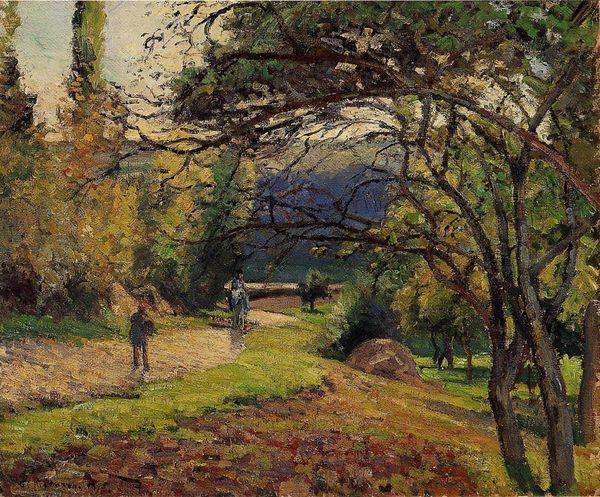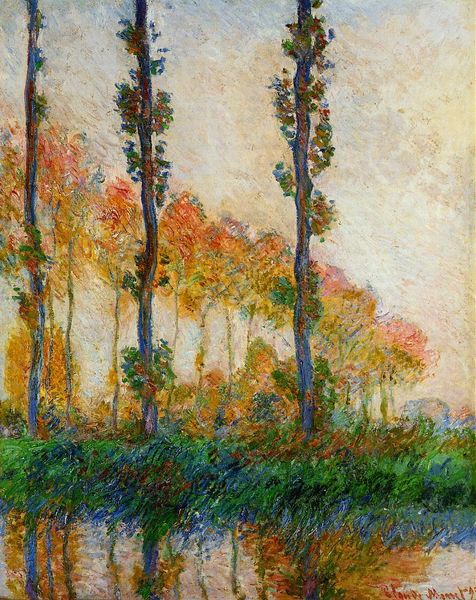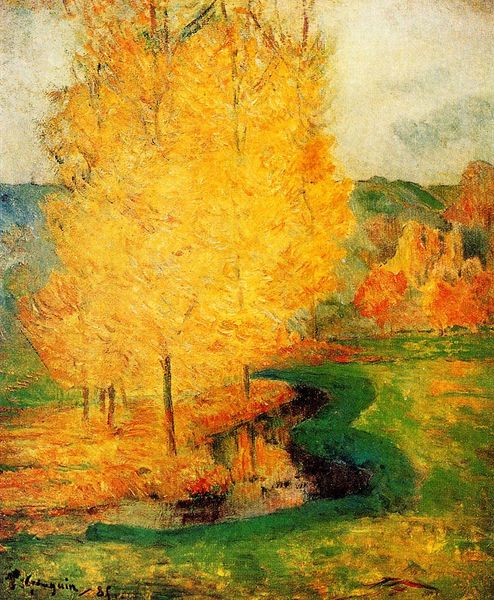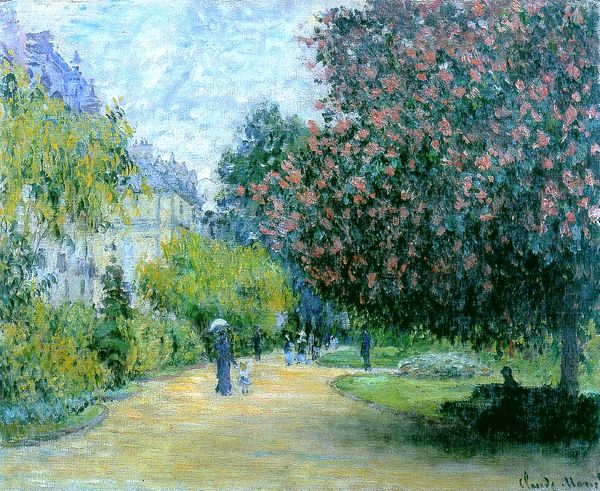
painting, plein-air, oil-paint
tree
garden
painting
impressionism
impressionist painting style
plein-air
oil-paint
landscape
impressionist landscape
nature
plant
park
nature
Dimensions: 72 x 93 cm
Copyright: Public domain
Editor: Here we have Van Gogh's "Path in the Park at Arles," painted in 1888. It’s an oil painting depicting…well, a path in a park. There's a wistful, almost melancholic feel to it despite the vibrant colors. What strikes you when you look at this piece? Curator: What resonates with me is the social commentary subtly woven into this landscape. Van Gogh painted this while at Arles, a time of intense artistic experimentation but also personal struggle. Consider the setting: a public park, a space meant for leisure and community. Yet, who populates it? We see figures, yes, but they're isolated, almost spectral. Look at the woman alone on the bench versus the men grouped to the left, it reveals the stratification of public space. Editor: I hadn't really thought about it that way. More about the application of colors and brushstrokes that is representative of Impressionist landscapes in general. Curator: Precisely! Van Gogh is twisting this familiar scenery into a broader discussion around isolation, class, and gender during a rapidly changing period in European history. The vibrant colors serve as a veil, concealing deeper tensions. The visible brushstrokes are a performative act, expressing the intense social pressures with what some would view as chaos, but really revealing deep social faultlines. Editor: So, you're saying he's not just painting a pretty scene, he's making a statement about society? Curator: Absolutely! Think about the political upheaval of the late 19th century, the rise of industrial capitalism, the changing roles of women. All of this is implicitly present in the painting, a critique of the societal impact within an apparently tranquil and pleasing landscape. It's an incredibly powerful undercurrent, transforming what could be merely an pretty artwork into a narrative. Editor: I will definitely look at Van Gogh differently now, understanding more context can completely change an artwork’s meaning. Thank you. Curator: I am just pleased you asked me! Now go change the world armed with an interdisciplinary perspective.
Comments
No comments
Be the first to comment and join the conversation on the ultimate creative platform.
